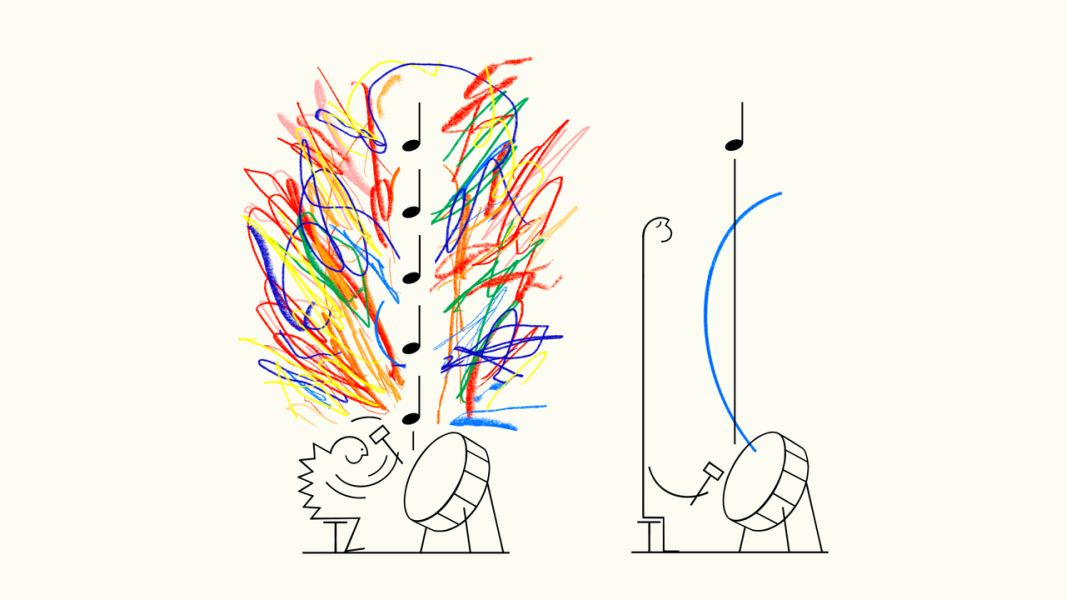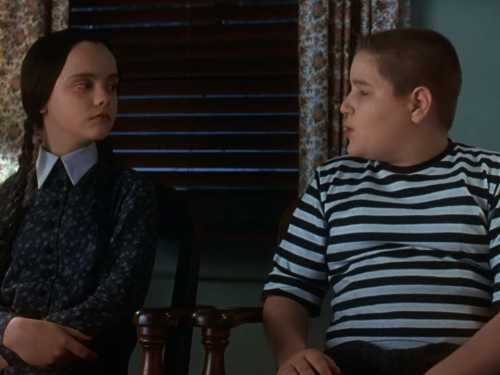
Save this storySave this storySave this storySave this story
Dmitri Shostakovich’s Fifth Symphony, one of the mainstays of the twentieth-century orchestral repertory, ends with an unapologetic display of musical bombast. The coda consists of thirty-five triple-forte bars in the key of D major, anchored on grandiloquent, fanfare-like gestures in the brass. The strings saw away at the note A, playing it no fewer than two hundred and fifty-two times, the winds piping along with them. The timpani pound relentlessly on D and A, the final notes accentuated by elephantine bass-drum thwacks. It is the pum-pum-pum-pum of “Also Sprach Zarathustra” run amok. The audience invariably springs to its feet.
If Shostakovich had written the Fifth under ordinary circumstances, the coda would present few problems. A bravura, over-the-top finish; end of story. The work arose, however, in 1937, at the time of Stalin’s Terror, and its meanings are profoundly fraught. The previous year, Stalin had conspicuously walked out of a performance of Shostakovich’s “Lady Macbeth of Mtsensk,” and the composer had been castigated in Pravda for practicing decadent formalism. While Shostakovich was at work on the Fifth, one of his highest-ranking supporters, the Soviet general Mikhail Tukhachevsky, had been executed. Not only the composer’s career but also, possibly, his life depended on what he did next. When, on November 21, 1937, the Fifth had its première, under the direction of Yevgeny Mravinsky, it seemed to renounce modernist complexity in favor of socialist-realist affirmation. Officialdom was satisfied; the pall was lifted. Yet doubts about Shostakovich’s sincerity lingered. Some observers found the ending of the Fifth cold and forbidding. Those who had suffered under the Terror detected signs of clandestine resistance. The triumph might be hollow, or it might be a triumph against the system.
Marina Frolova-Walker and Jonathan Walker, in a new book titled “Shostakovich’s Symphony No. 5,” begin with those thirty-five bars, charting a sharp divergence in how conductors have handled them. The authors cite a sequence in Semyon Aranovich and Alexander Sokurov’s 1981 film, “Sonata for Viola,” a documentary about the composer. First, we see footage of Mravinsky leading the Leningrad Philharmonic. Frolova-Walker and Walker write, “His austere features and spare gestures suggest utter seriousness, and he slows the tempo down greatly in the final section, grimacing as if in pain when the bass drum joins the timpani.” The film then cuts to a performance by Leonard Bernstein and the New York Philharmonic, on tour in Moscow in 1959. This one is “fast and jubilant”; the conductor flashes a grin as he drives the music home. Mravinsky’s coda takes eighty-seven seconds; Bernstein’s, forty.
When the full range of approaches to the symphony is considered, an ever more drastic divide yawns. The musicologist Peter Kupfer, in a 2022 article titled “Of Majesty, Mockery, and Misprints: The Coda of Shostakovich’s Fifth on Record,” analyzes more than a hundred and fifty recordings and tabulates the almost comical discrepancies among them. At one extreme is Serge Koussevitzky, who, in a 1948 rendition with the Boston Symphony, sprints through the coda in thirty-seven seconds. At the other is Kurt Masur, who, leading the London Philharmonic in 2004, requires slightly more than two minutes to traverse the same span of music. It’s difficult to think of another repertory work that has elicited such a spectacular deviation in performance practice. The notes are the same, but the messages attached to them are irreconcilable.
The story of how the coda of the Fifth became an interpretive war zone is a tangled one, involving not only Soviet cultural politics but also, as Kupfer’s title indicates, a misprint in the score. The most fascinating twist, though, is that Shostakovich himself declined to resolve the issue. Mravinsky, having conducted the première, carries primary authority. Yet in “Sonata for Viola” we see a visibly delighted Shostakovich embracing Bernstein after the Moscow concert. Later, the composer wrote in a letter to a colleague, “I was very taken with the performance of my Fifth Symphony by the talented Leonard Bernstein. I liked it that he played the end of the finale significantly faster than is customary.” We want to find the “right” interpretation; Shostakovich, a supremely wily artist, knows there is none.
The trouble started with a metronome—that pesky apparatus which, since Beethoven’s time, has created as much confusion as it has cleared up. At the time of the première, Mravinsky and Shostakovich worked out a set of metronome markings that were then inserted into the score. These proved impractical in some instances and had to be revised. Because it was so difficult to get a straight answer out of Shostakovich, Mravinsky would sometimes choose a patently ridiculous tempo to elicit a reaction.
For the coda, Shostakovich and Mravinsky apparently settled on a metronome marking of eighth note = 184 or 188. (The original manuscript has disappeared, so we don’t know precisely.) In the first published score, the figure was mistakenly given as quarter note = 188, which is twice as fast. Soviet performances were not affected, since they tended to follow Mravinsky’s lead. Yet conductors in the West—Koussevitzky, Bernstein, Leopold Stokowski, Dimitri Mitropoulos, and Artur Rodzinski, among others—took the marking at face value. During the Second World War, the bat-out-of-hell tempi that prevailed were of a piece with Allied fellow-feeling: here were heroic Russians throwing themselves into battle and production. Nor would a committed leftist like Bernstein have been inclined to look for tragic undertones in the Fifth. His trip to the Soviet Union in 1959 was, after all, undertaken as a “mission of friendship,” in his own words, although it also fit a Cold War agenda of asserting American cultural strength.
Perceptions of Shostakovich changed in the sixties and seventies. The composer’s later works, rife with ironies, ambiguities, and enigmas, disturbed the image of a Soviet true believer. The belated emergence of the sprawling, self-demolishing Fourth Symphony—which Shostakovich had been writing at the time of the Pravda denunciation and had subsequently withheld from performance—shed new light on the far tidier Fifth. Furthermore, the “correct” metronome marking was now present in most scores. The decisive event, though, was the publication, in 1979, of Solomon Volkov’s “Testimony,” which purported to be Shostakovich’s secret memoirs, channelling his rage against the Soviet system. (The composer had died four years earlier.) In a passage that has been quoted in countless program notes, the narrator declares that the Fifth’s ending is “forced, created under threat . . . It’s as if someone were beating you with a stick and saying, ‘Your business is rejoicing.’ ” Those phrases helped to usher in revisionist readings in which conductors strove to make the coda sound as dire as possible. Kurt Sanderling and Mstislav Rostropovich led the way with recordings made in 1982.
To say that “Testimony” proved controversial is to put it very mildly. Many of Shostakovich’s relatives and friends, including his widow, Irina, accused Volkov of fabrication. The musicologist Laurel Fay later subjected “Testimony” to devastating scrutiny. Volkov had offered as proof of authenticity the fact that the composer had signed one page of each chapter. Fay found that those pages duplicated politically innocuous material that had already been published elsewhere. Shostakovich may have given his approval to an entirely different document. Although more reliable witnesses corroborate some of the stories told in “Testimony,” the book is ultimately useless as a historical source. Those words about the Fifth are especially suspect, because they are so untypical of Shostakovich’s customarily noncommittal tone toward questions of interpretation.
Shostakovich’s son, Maxim, passed along a more plausible framing of the coda. Once, Maxim said, his father had reacted to a comment that the writer Alexander Fadeyev had made in a notebook shortly after the première. Fadeyev heard the ending as a “punishment, or an act of revenge.” Shostakovich, according to Maxim, replied that “it was not just scolding. The hero is saying: ‘I am right. I will follow the way I choose.’ ” In this sense, that slower, heavier tempo represents a grim assertion of personal will. You can, perhaps, discern such an attitude on Mravinsky’s face in that remarkable sequence from “Sonata for Viola.”
Yet a musical challenge remains. How do you go about getting an orchestra to play all that blaring D major in a way that communicates conflict and doubt? To my ears, most of the slow versions sound no more troubled or menacing than the sped-up ones. Masur’s take is so surreally glacial that it begins to sound like a minimalist recomposition, along the lines of Leif Inge’s twenty-four-hour-long transformation of Beethoven’s Ninth. Often, the slower the tempo, the more self-aggrandizingly pompous the music becomes. Those final twin blows of the timpani and the bass drum have a fist-pumping vibe. If, as “Testimony” tells us, the rejoicing is compulsory, whom are we applauding when we jump to our feet? Are we, too, saluting Stalin?
Whatever tempo is chosen, the score indicates no ritardando, no slowing down, in the last few bars. Yet a ritardando seems to have been traditional from the start; you hear Mravinsky doing it in his first recording, from 1938. There’s a strong resemblance to the transcendent coda of Mahler’s Third Symphony, in which two pairs of timpani pound repeatedly on D and A, doubling the values at the very end. But what if you followed the score and plowed straight ahead? Such was Mark Wigglesworth’s choice when he recorded the symphony with the BBC National Orchestra of Wales, in 1996. He opts for a quick tempo and sticks to it unswervingly. The effect is genuinely frightening—like a locomotive going off a cliff at full speed. This, it seems to me, is the closest anyone has come to signalling an irony behind the triumph.
A recent series of recordings by Andris Nelsons and the Boston Symphony carried the title “Shostakovich: Under Stalin’s Shadow.” A troubling aspect of the composer’s afterlife is that he now seems eternally imprisoned in that shadow, the dictator having become an essential part of the marketing package. One work after another is deciphered as an allegory of the artist’s tribulations under the regime. Shostakovich is reduced to a hapless victim of circumstance, incapable of speaking in an independent voice.
This is belittling, and also misleading. Shostakovich did not absent-mindedly stumble into a position of lasting cultural power. Behind closed doors, he could be a bold, shrewd operator. Frolova-Walker demonstrates as much in her 2016 book, “Stalin’s Music Prize,” which is based in large measure on transcripts of prize-jury discussions in which Shostakovich participated. The composer is unexpectedly feisty in these sessions, disparaging mediocrities and promoting friends. In 1954, shortly after Stalin’s death, the music committee contemplated giving a prize to Alexander Mosolov, a former avant-gardist who had tried to redeem himself by writing pieces based on folk material. Shostakovich snapped, “I don’t believe in his talent. And his modernist excursions were just as talentless as this.” The remark is gratuitously nasty—and it shows Shostakovich to be a flesh-and-blood human rather than an anemic saint.
Frolova-Walker and Walker, at the end of their book on the Shostakovich Fifth, entertain an enticing possibility: What if the work actually had nothing to do with Stalin? What if it were preoccupied with much more private matters? In 2000, the pianist and conductor Alexander Benditsky published a study noting that the Fifth is mysteriously littered with references to Bizet’s “Carmen.” Benditsky linked those allusions to Shostakovich’s infatuation with the translator and interpreter Elena Konstantinovskaya, who, just before the symphony was composed, had started dating the dashing young documentarian Roman Karmen. Konstantinovskaya and Karmen had met in Spain, during the Civil War. Hence the influx of “Carmen” material and Spanish atmosphere. The Shostakovich authority Manashir Yakubov has expanded on Benditsky’s thesis, and Frolova-Walker and Walker add their own inferences.
What emerges is a dizzying new perspective on Shostakovich’s famous score: a symphonic allegory not of an individual’s struggle against political fate but of an ill-fated love triangle. There are unmistakable references to the Habanera (in particular, the motif “L’amour, l’amour” ); the Toreador’s Song (representing the rival lover); Bizet’s fate motif (encoded into the opening); and the refrain “Tra la la la,” which happens to spell out Konstantinovskaya’s nickname, Lala. The rising phrase that anchors the Fifth’s finale also harks back to the Habanera—the chorus’s refrain of “Prends garde à toi!” (“Beware!”) One of Frolova-Walker and Walker’s suggestions is liable to send the shadow-of-Stalin contingent into conniptions. In Russian, as in Italian, the note A is called “La.” Those repeated A’s in the coda, appearing in pairs of eighth notes, can be heard as la-la, la-la, la-la, la-la. Frolova-Walker and Walker bring all this up not to replace one interpretation with another but to complicate the issue of how we attach stories to music. The Fifth, they conclude, “remains an open book,” resistant to a single reading.
I can’t help wondering what the “Carmen” subtext might mean for the contested ending. Does the coda become a sort of fantasy of victory on Shostakovich’s part? Is it a vision of Lala grinding him into dust? Either way, a fast tempo seems a better match for whatever melodrama might lurk in the score. Perhaps Shostakovich embraced the Bernstein approach precisely because it brought that private hysteria to the surface. (A similar maneuver is found in the Tenth Symphony, from the early fifties, which contains covert references to his composition student Elmira Nazirova and closes with a grotesque self-parody.) Shostakovich had a yen for madcap, borderline-silly finales, notably in his Sixth and Ninth Symphonies. What if the Fifth were to fall into the same category—even if the motivating factor were a faulty metronome marking?
An anecdote from Shostakovich’s last years adds a grace note to the tortuous history of the Fifth. During a visit to the United States in 1973, he expressed a wish to attend a performance at the Metropolitan Opera. The opera wasn’t “Carmen” but “Aida,” another tale of love and death. During the intermissions, the composer, frail and racked with pain, remained sitting in the general manager’s box. Mel Broiles and Harry Peers, the Met’s lead trumpeters, saw him there and decided to salute him with the opening phrase from the Fifth’s finale. Blushing with delight, Shostakovich struggled to his feet and waved back. His embattled symphony had escaped the nightmare of history and turned, at last, into grand opera. ♦
Sourse: newyorker.com






